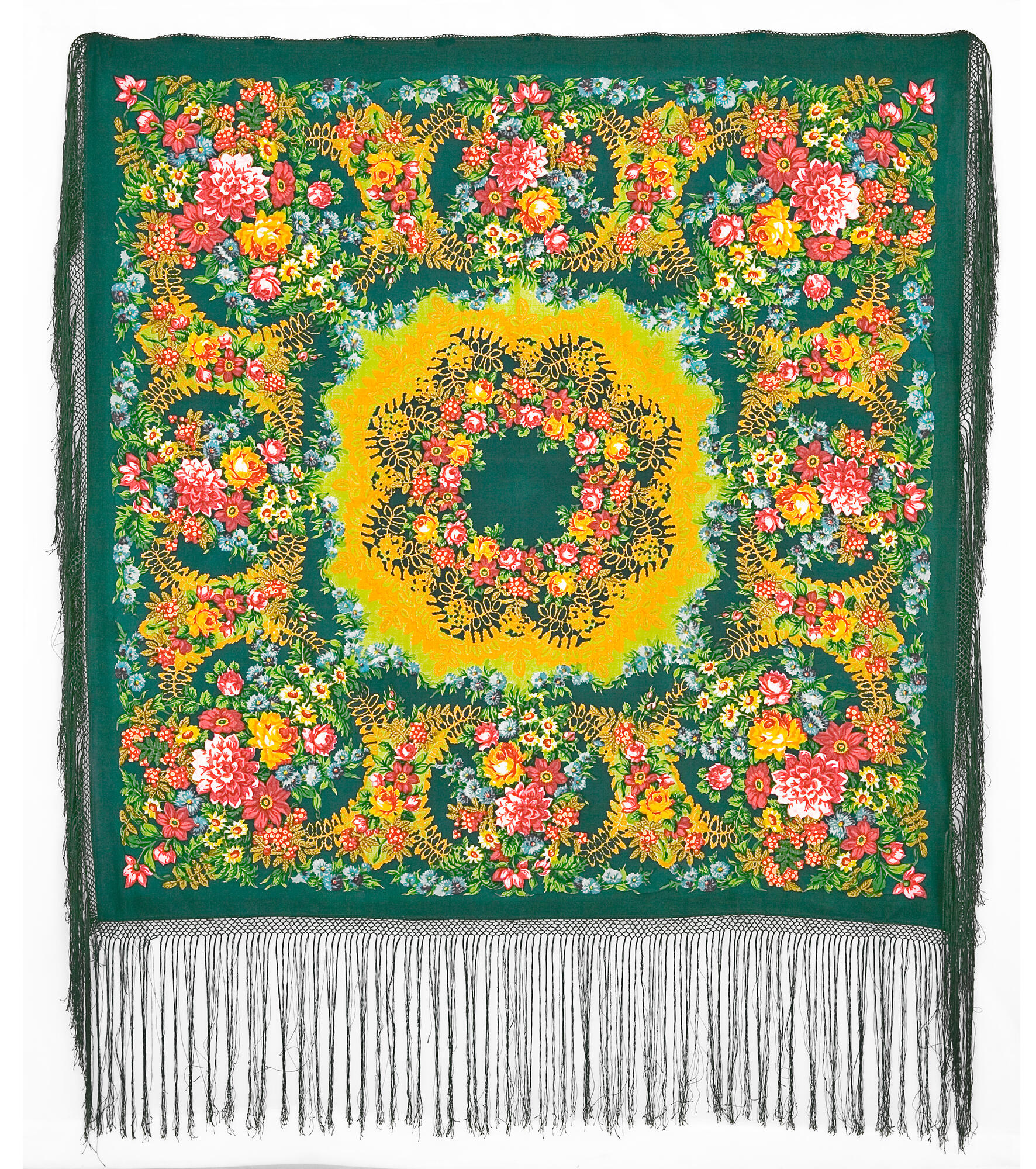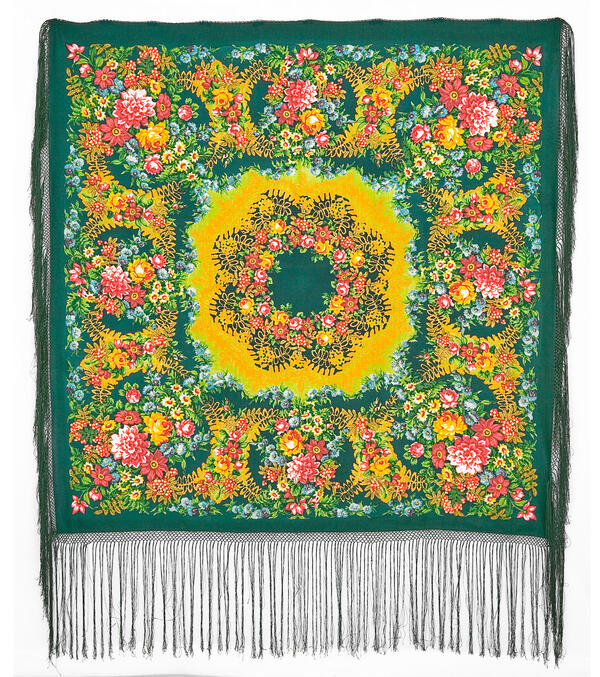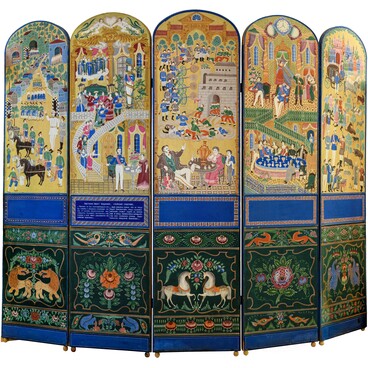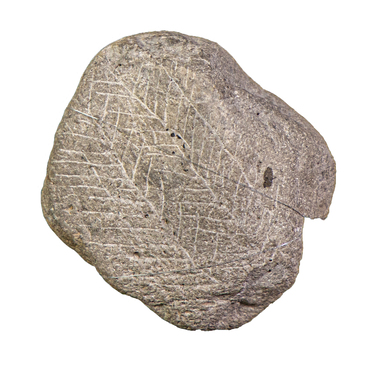In Russia, patterned wool shawls came into fashion, which originated in France, in the early 19th century. Over the century, they gained popularity among all Russian citizens — from aristocrats to peasants. Gradually, shawls with printed patterns replaced expensive woven ones. Light, warm and smart, they were in demand not only due to the beauty of the drawings, but also due to their relatively low price.
In the second half of the 19th century, printed headscarves and shawls were produced by many factories, located mainly in Moscow and Bogorodsky district of the Moscow Governorate. The town of Pavlovsky Posad became a major textile center. Headscarves created in the technique of woodblock printing were produced at several factories, among which was the factory of merchants Yakov Labzin and Vasily Gryaznov. Over time, this Pavlovsky Posad manufacture grew into the largest factory that produced woolen scarves and shawls. The headscarf factory operates to this day; it is the only enterprise of its kind in Russia.
In the late 19th century, the Pavlovo Posad headscarves and shawls became not only a fashionable element of women’s clothing, but also a collector’s item. Presently, they are housed in many museums and private collections.
The shawl “Rowanberry” is one of the works of Ekaterina Regunova. The drawing on it demonstrates the main features of the Pavlovsky Posad shawl of the 1950s: its decorative quality, dense arrangement of the floral pattern, freely chosen motifs and their interpretation, the use of outlines and contour images of various plants.
The shawl has a classic composition. Lush, realistically depicted bouquets are located in the corners and along the sides, and the centerpiece features a circular composition in the form of a wreath. In the center of each bouquet, one can see a large red-pink dahlia and a golden rose, around which other garden and wildflowers are concentrated. Along with traditional floral motifs, bright clusters of rowanberries are included in the shawl’s pattern.
The peculiarity of the drawing is achieved by the technique of combining a beautifully executed floral pattern with a contour image of ocherish-golden rowan-tree leaves, which here look like openwork. The shawl with this pattern was very popular. It was produced by hand in the technique of woodblock printing for more than 20 years until the mid-1980s.
In the second half of the 19th century, printed headscarves and shawls were produced by many factories, located mainly in Moscow and Bogorodsky district of the Moscow Governorate. The town of Pavlovsky Posad became a major textile center. Headscarves created in the technique of woodblock printing were produced at several factories, among which was the factory of merchants Yakov Labzin and Vasily Gryaznov. Over time, this Pavlovsky Posad manufacture grew into the largest factory that produced woolen scarves and shawls. The headscarf factory operates to this day; it is the only enterprise of its kind in Russia.
In the late 19th century, the Pavlovo Posad headscarves and shawls became not only a fashionable element of women’s clothing, but also a collector’s item. Presently, they are housed in many museums and private collections.
The shawl “Rowanberry” is one of the works of Ekaterina Regunova. The drawing on it demonstrates the main features of the Pavlovsky Posad shawl of the 1950s: its decorative quality, dense arrangement of the floral pattern, freely chosen motifs and their interpretation, the use of outlines and contour images of various plants.
The shawl has a classic composition. Lush, realistically depicted bouquets are located in the corners and along the sides, and the centerpiece features a circular composition in the form of a wreath. In the center of each bouquet, one can see a large red-pink dahlia and a golden rose, around which other garden and wildflowers are concentrated. Along with traditional floral motifs, bright clusters of rowanberries are included in the shawl’s pattern.
The peculiarity of the drawing is achieved by the technique of combining a beautifully executed floral pattern with a contour image of ocherish-golden rowan-tree leaves, which here look like openwork. The shawl with this pattern was very popular. It was produced by hand in the technique of woodblock printing for more than 20 years until the mid-1980s.



